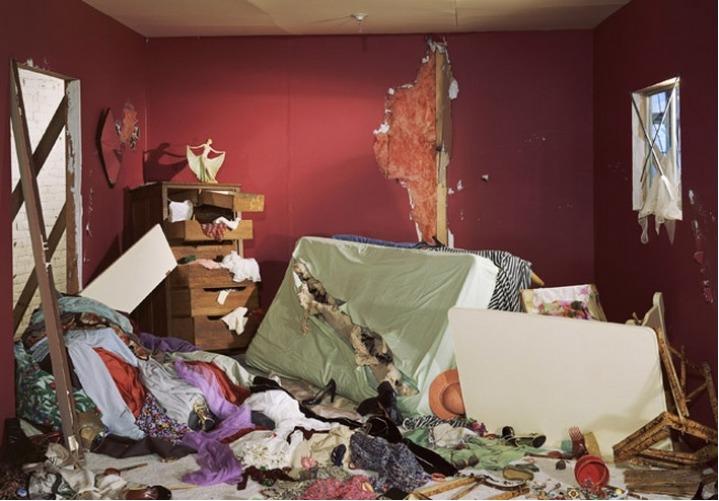Published in Broadsheet
Jeff Wall’s survey exhibition at the MCA is proof of his talent for bringing unrealised narrative moments to life.
In literature, the subjunctive mood is a technique that assigns meaning to something that hasn’t yet happened, rather than what is actually been described. In doing so, it creates moments that owe their impact to an unseen reality – a truth that’s always bigger than what first meets the eye.
In many ways,Jeff Wall Photographs – the MCA’s new survey of classic and recent works by the celebrated Canadian photographer – is a study in the power of the subjunctive. It’s this focus, along with precise execution, that has seen Wall elevate photography from an act of observation to a process of creation in which the artist takes centre stage.
Unsurprisingly, Wall ranks Kafka – a fellow advocate of this underrated narrative mode – among his favourite writers and is a firm believer in the relationship between literature and visual art. “All pictorial art is linked to literature in some way; everything visual is always related to some kind of literary form,” he offers. “Consider photojournalism for instance. A lot of great photographs in the journalistic tradition connect back to journalism.”
The 27 works, which span full-colour transparencies in light boxes, smaller prints and finely-tuned photographic observations, are more powerful if you read Wall as a visual storyteller rather than a conventional photographer.
For instance, Destroyed Room (1978), a large-scale recreation of a woman’s destroyed bedroom, might include a violently torn, overturned mattress and yawning, ransacked drawers, but its narrative subtext is perhaps its most disturbing element (Wall created this piece shortly after his wife Jeannette left him for another man).
Similarly, A Woman and her Doctor (1981) – an image of a sultry, affluent women smoking a cigarette while her older doctor attempts to catch her gaze – relies on the taut, sexually charged language of 1930s pulp fiction to make its point. It also captures an unspoken history between its two protagonists at the very point at which it is about to unfold.
Elsewhere, After Invisible Man (2001), a meditation on Ralph Ellison’s acclaimed novel of the same name, displays Wall’s combination of technical ambition and creative audacity. The piece, which took a year to produce and features 1369 light bulbs meticulously arranged on the ceiling of an underground cavern, shows that Wall’s vision is closer to that of a cinematographer rather than a photographer.
It’s also proof that Wall’s ability to imbue his art form with fresh potential may be the reason he’s considered one of the most significant photographers working today.
Jeff Wall Photographs shows at the MCA until July 28.
